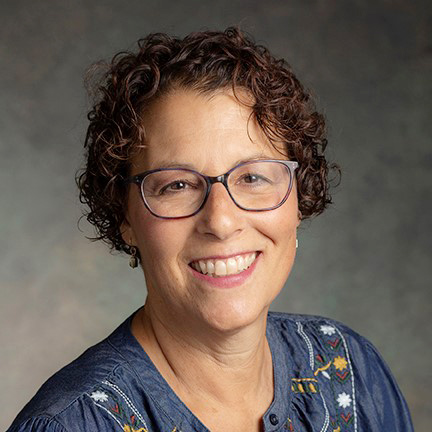One Teacher’s Path to Teaching Toward Shlemut

Dr. Jane Sherwin Shapiro
Once, a friend and colleague lovingly laughed at me because she thought I was the last Jewish educator standing with an appetite for reading educational philosophy. I now can say with firm conviction that within the Fellowship in Educating for Applied Jewish Wisdom, I have found my people. What emerged from our work together continues to inspire me.
Enriching ideas and theories aside, teachers like to apply the lofty to the practical. So, how do I use our six-pointed star, or jewel of shlemut, to prepare an actual lesson for my students? Perhaps the following course description can open up this collegial conversation.
Since September of last year, I have been teaching a class about Shabbat for a group of women whose children have grown and moved away from home. Their roles as Jewish mothers who cooked for Shabbat and taught their children how to celebrate Shabbat had come to an end, and now they were exploring how they might want to “practice Jewish” at this time in their lives and how Shabbat might become more of a personal spiritual practice.
As a teacher dedicated to constructivist teaching and learning, I planned the class from their current life experiences. Previously, our learning group has explored Dr. Barry Holtz’s book on Rabbi Akiva, reading many of the Talmudic passages he cites in fuller form. Participants became interested in the famous rabbinic personalities of Elisha ben Abuya and Rabbi Shimon bar Yochai, who were among Rabbi Akiva’s colleagues.
As a result, this class on Shabbat began with a two-month study of Shimon Bar Yochai as a teacher, father, and interpreter of what Shabbat is meant to be. Then we moved on to close explorations of biblical texts on Shabbat, Heschel’s The Sabbath, essays by Soloveitchik, Mishnah, Hasidic sermons by the Sefat Emet, liturgy, and poems from non-Jewish sources, including Rumi and David Whyte. The materials were selected specifically because they provided images and metaphors for Shabbat, used pointed and vivid language to talk about Shabbat, and had potential to help my students find inspiration and more clarification for what Shabbat could be for them going forward.
Texts about Shabbat can be accessible to all educators. But in trying to teach for shlemut (wholeness), my goal was to help students cultivate personal dispositions toward Shabbat, in ways that might unfold not just from Friday afternoon to Saturday evening but throughout their week. I was looking not for understanding about Shabbat but attunement toward it. Metaphoric language allowed students to develop a personal concept. As the group shared what they were thinking and feeling, their ideas circled back and forth and became interwoven. I believe that a “presencing of the sacred” occurred. The room often became still and quiet. Voices changed. Gazes shifted as participants reacted to the tranquility of the moment. Hand motions swirled, drew close to the heart, or even spilled over like Kabbalistic shefa. In these moments for the most part, my pedagogic practice is to become very still.
At this moment, each and every student experiences a new “authoring of the self.” Participants make a deeper set of connections between the source material and their inner sentiments and sensibilities. It often appears as imagination in action, with the added twist that it is about personal religious life. I help them strive for shlemut without trying to prescribe a set of concrete expectations or rituals. That may be a privilege in an adult-education classroom that is not attached to an institution.
When students speak of how they might bring the classroom experience back into a meditation before lighting candles or when they wish each other “Shabbat Shalom” at the end of class, I know what they are really saying: “I have had refuge in a morning of shlemut and I hope you have, too.”
Dr. Jane Sherwin Shapiro (DS’16) is passionate about all aspects of Jewish teaching and learning. She has been a teacher to many over the last 30 years, in classes ranging from weekly Torah study to Jewish thought, history, and literature. She has consulted with organizations ranging from the American Jewish Committee, JTS, Camp Ramah, Spertus Institute, and Jewish Federations of North America, and was honored to author the Mitzvah initiative Curriculum for Chancellor Eisen. Jane received her doctorate from The William Davidson School of JTS in 2016. In 2017 Jane received the prestigious Educators Award from the Covenant Foundation. In 2018 she was featured in an Eli talk on “The Torah of Bubbiehood.” She lives in Skokie, Illinois, with her husband, David. She is also mother to four sons, mother-in-law to three daughters, and grandmother to four grandchildren.



